ImpressioVivo
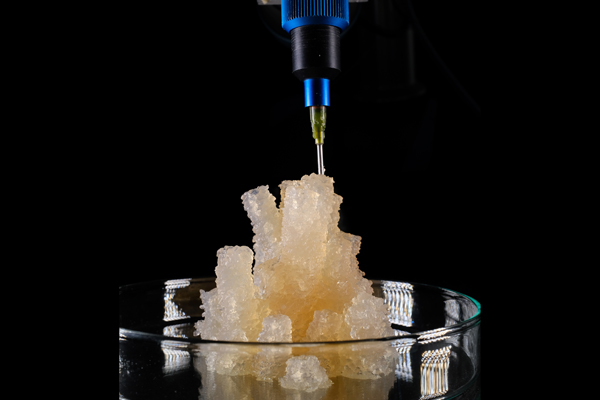
ImpressioVivo (2022 - 2026)
examines the 3D printing of biomaterials induced by luminescent and calcifying bacteria for circular design applications. The project is an interdisciplinary research enquiry sitting at the intersection of architecture, design and microbiology led by Soft Matters, in collaboration with CITA, 3d.FAB & Soletanche Bachy.
Architects and designers have usually not exploited the poetic, aesthetic and cultural potential of biotechnologies with the same energy and extent that engineers have exploited their functional possibilities. This is particularly true in respect to recent bioprinting techniques that can be briefly defined as the 3D printing of living materials and systems. Acknowledging the need for interdisciplinary approaches to bioprinting research, ImpressioVivo is a biodesign-led project examining the circular conception and fabrication of 3D printed bio-based materials induced by light-emitting and calcifying bacteria for an architectural and design context.
Concerned with challenging the perception of resource as infinite and by promoting a resilient approach to material resources relying both on post-industrial waste and bio-based renewable deposits, the project seeks to understand how designers and architects can work with bacteria to design 3D printed bioluminescent and bio-calcified materials for circular design applications. A first material axis focus on the design of bioluminescent living hydrogels induced by the Vibrio Fischerii luminescent bacteria and a second one on the calcification of an upcycled foam made from paper waste by Sporosarcina pasteurii.
By studying the appropriation of these living organisms through advanced robot-controlled 3D printing technologies, the project will establish a conceptual, material and technological framework for a bio-controlled bacteria growth and 3D extrusion process supporting the circular design of materials based on petroleum-free, renewable resources for interior design & architectural applications. These results will ultimately be embodied in 1:1 scale demonstrator(s) displayed in a public context. A first demonstrator based on the 3D printing of a bioluminescent materiality intends to reflect on what does it mean to apprehend architecture as a temporary living environment while we expect the second one to illustrate the potential of bio-calcified paper-foam as lightweight load-bearing materials.
By pushing the 3D printing of bioluminescent and bio-calcified materials towards an architectural scale, ImpressioVivo will not only design innovative materials and techniques contributing to the expansion of the bioprinting field, but also respond to the vital need of transforming the material culture of creation in architecture and design in the light of current ecological challenges. Due to its interdisciplinary nature, the project will also contribute in bridging the gap between science, design and engineering, a necessity when it comes to such a transversal challenge as the bioeconomy.
Project coordinator: Aurélie Mosse
Main researchers: Aurélie Mosse (PI), Daniel Suárez, Vincent Rennie, Quentin Poudoulec.
Partners: Mette Ramsgaard Thomsen, Martin Tamke (CITA, Royal Danish Academy); Christophe Marquette, Emma Petiot (3d.FAB, Univ. Lyon 1), Soletanche Bachy.
Scientific advisory board: Arnaud Dubois (CNAM), Michael Kühl (University of Copenhagen); Kim Poldner (The Hague University of Applied Science); Meng Zhang (Hub for Biotechnology & the Built Environnement).
Funding JCJC grant of Agence Nationale pour la Recherche (ANR), (287k€) referenced as n° ANR-21-CE43-0023-01
Acknowledgement: We thank Soletanche Bachy and ViscoTec France as well as our Paris Sciences et Lettres (PSL) colleagues Nicolas Desprat, Dario Dell’Arciprete and Cécile Monteux for their complementary support.
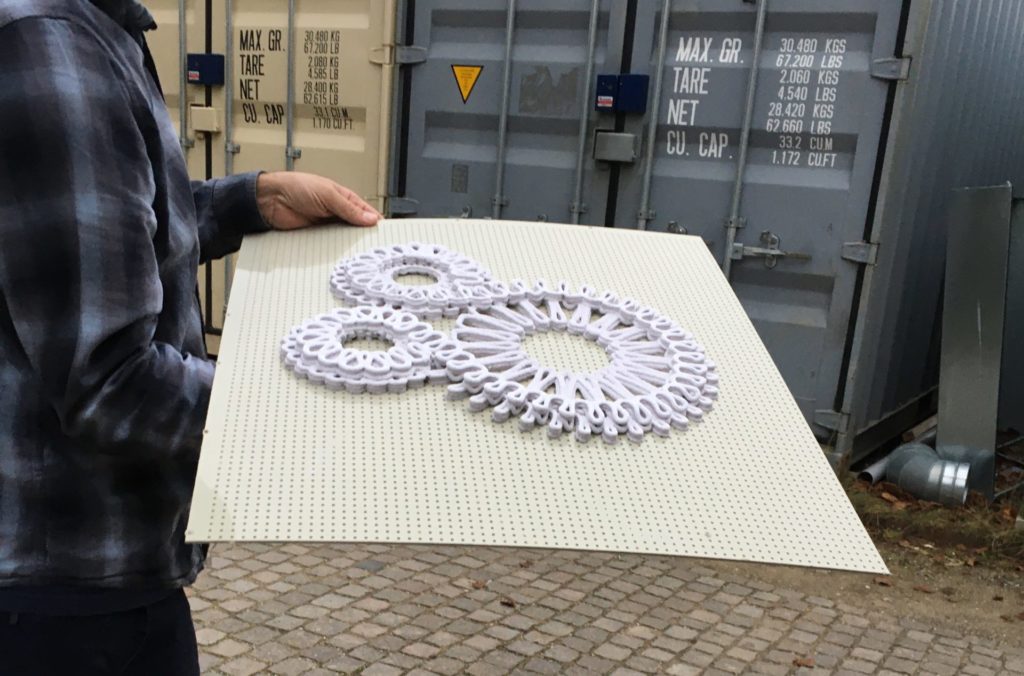
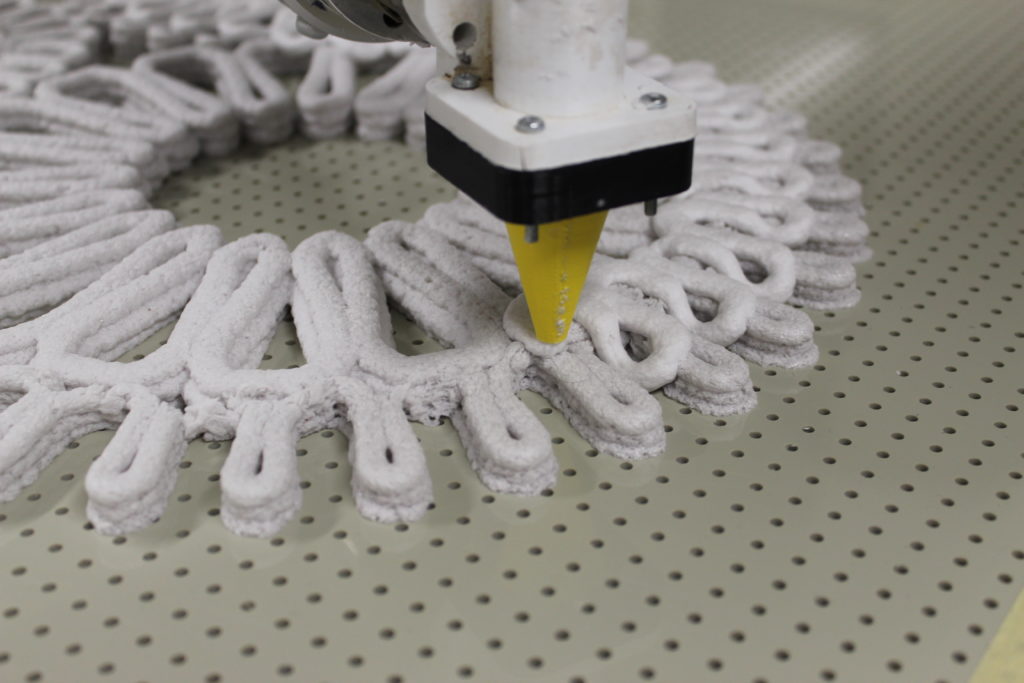
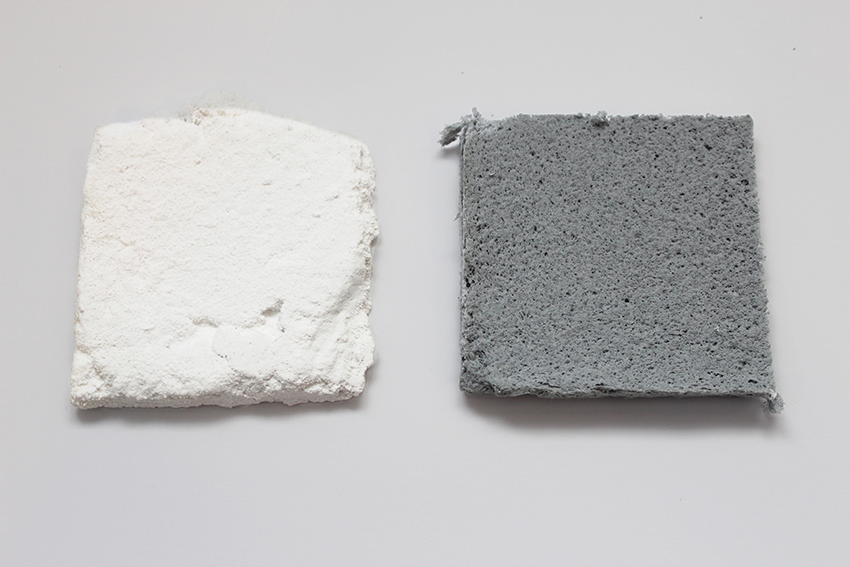
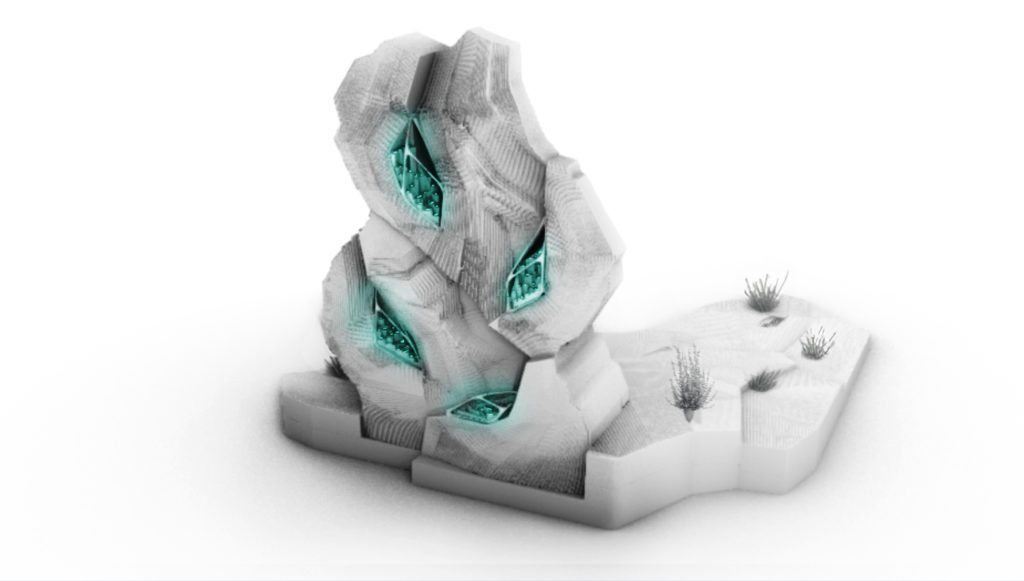
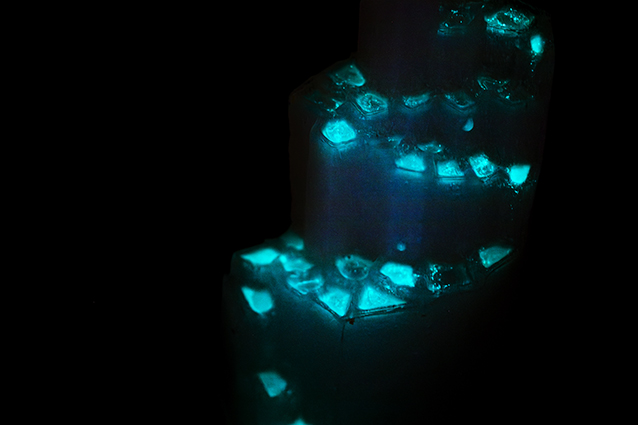
Related publications
- Mosse, A., Smith, C., 2025, Building furniture with bacteria: from bacillus to bench seats… [Podcast], 4th of February 2025, The Naked Scientists.
- Mosse, A., Ramsgaard Thomsen, M., Rennie, V., Suárez Zamora, D., Tyse, G., Tamke, M., 2024, Pepeyoca: Reconsidering The Bioreactor As A Bioluminescent Living Wall For Human-Bacterial Co-Inhabitation,In Herrera, P.C., Gómez, P., Estévez A.T., Torreblanca-Díaz, D.A. (Eds.), SIGraDI 2024 -Biodigital intelligent systems, 13-15th of November 2024, IBAG-UIC, Barcelona, Spain, pp. 2287-2299.
- Mosse, A., Rennie, V., Poudoulec, Q., Suárez Zamora, D., 2024, Paper waste grown as a biocalcified foam: perspectives from a bacterial and design viewpoint, Research Directions: Biotechnology Design, Cambridge University Press, pp. 1–24. doi: 10.1017/btd.2023.11
- Mosse, A.; Bassereau, J.F., 2022, ‘Material probes into paper waste as a bacterially-induced and 3D printed foam: combining biodesign and circular principles’,, In Frier Hvejsel, M., Cruz, P.J.S. (Eds.), Structures and Architecture. A viable urban perspective? Proceedings of ICSA 2022, 5th International conference on Structures & Architecture, Aalborg, 6-8th of July 2022, CRC Press.
- Tyse, G., Tamke, M., Ramsgaard Thomsen, M., Mosse, A., 2022, ‘Bioluminescent micro-architectures: planning design in time, an eco-metabolistic approach to biodesign’, Archit. Struct. Constr., Springer.